Hoop pine is a softwood widely used in general construction purposes, interiors, and for furniture.
Queensland Pine, Colonial Pine, Moreton Bay Pine
Araucaria cunninghamii
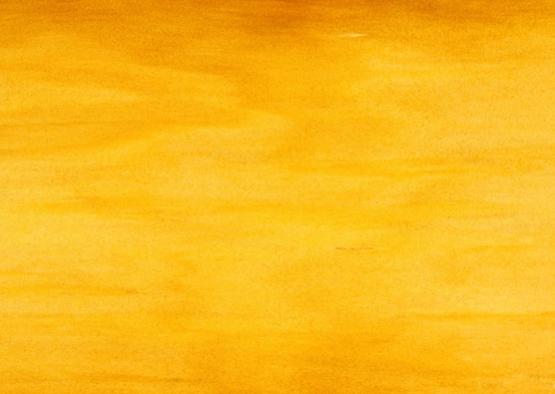
Hoop pine is a Queensland timber whose ease of use has made it popular for general construction purposes, flooring, joinery, shelving and cupboards, furniture, and plywood. When treated with preservatives it is suitable for outdoor uses such as fencing, pergolas, landscaping, retaining walls, and playground equipment. It is also used for a variety of non-architectural and non-building purposes, such as the manufacture of musical instruments, drafting instruments and brushware.
The heartwood ranges from pale cream to light yellow brown with little difference between heartwood and sapwood, though the heartwood is a little darker. It is a very fine and evenly textured wood with a straight grain. The growth rings are visible but not distinct and the figure is plain or mottled.
The sapwood of hoop pine is easily treatable with preservatives, but the heartwood is not. It is resistant to lyctid borer attack, but not to termites. It is of low durability, with the heartwood having a life expectancy of less than seven years above ground and five below.
Hoop pine machines and turns well, but is not suitable for steam bending. It can be polished, painted and stained with ease, and works well with fittings and fastenings.
Shrinkage
| Very Low | Low | Medium | High | Very High | |
|---|---|---|---|---|---|

|

|

|
|||
Tangential : |
3.60%
|
||||
Radial : |
2.50%
|
||||
Unit Movement Tangential: |
0.23%
|
||||
Unit Movement Radial: |
0.18%
|
Strength Group

Very High |
High |
Reasonably High |
Medium High |
Medium |
Reasonably Low |
Low |
Very Low |
||
Unseasoned: |
S1 |
S2 |
S3 |
S4 |
S5 |
S6 |
S7 |
S8 |
|
|---|---|---|---|---|---|---|---|---|---|
 |
|||||||||
Seasoned: |
SD1 |
SD2 |
SD3 |
SD4 |
SD5 |
SD6 |
SD7 |
SD8 |
|
 |
Stress Grade

| Structural No. 1 |
Structural No. 2 |
Structural No. 3 |
Structural No. 4 |
Structural No. 5 |
|
Unseasoned: |
F8 |
F7 |
F5 |
F4 |
|
Seasoned: |
F17 |
F14 |
F11 |
F8 |
F7 |
Density per Standard

Seasoned: |
530kg/m3
|
|---|---|
Unseasoned: |
800kg/m3
|
Joint Group

Very High |
High |
Reasonably High |
Medium |
Low |
Very Low |
|
Unseasoned: |
J1 |
J2 |
J3 |
J4 |
J5 |
J6 |
|---|---|---|---|---|---|---|
 |
||||||
Seasoned: |
JD1 |
JD2 |
JD3 |
JD4 |
JD5 |
JD6 |
 |
Colour

| White, yellow, pale straw to light brown | Pink to pink brown | Light to dark red | Brown, chocolate, mottled or streaky | |
 |
||||
Mechanical Properties
Modulus of Rupture - Unseasoned: |
48
|
|---|---|
Modulus of Rupture - Seasoned: |
90
|
Modulus of Elasticity - Unseasoned: |
10
|
Modulus of Elasticity - Seasoned: |
13
|
Maximum Crushing Strength - Unseasoned:  |
26
|
Maximum Crushing Strength - Seasoned: |
49
|
Impact - Unseasoned: |
9.3
|
Impact - Seasoned: |
5.7
|
Toughness - Unseasoned: |
Low - up to 15 Nm
|
Toughness - Seasoned: |
Low - up to 15 Nm
|
Hardness - Unseasoned: |
2.7
|
Hardness - Seasoned: |
3.4
|
Durability
| Low | Moderate | Reasonably High | High | |
| (0 - 5 yrs) | (5 - 15 yrs) | (15 - 25 yrs) | (more than 25 yrs) | |
In-Ground: |
 |
|||
| (0 - 7 yrs) | (7 - 15 yrs) | (15 - 40 yrs) | (More than 40 yrs) | |
Above ground: |
 |
|||
| (0 - 20 yrs, usually < 5) | (21 - 40 yrs) | (41 - 64 yrs) | (More than 60 yrs) | |
Marine Borer Resistance: |
 |
Lyctid Borer Susceptibility: |
Not Susceptible |
|---|---|
Lyctid Borer Susceptibility - Other: |
|
Termite Resistance: |
Not Resistant
|
Fire Properties
| 0 | 1 | 2 | 3 | 4 | 5 | 6 | 7 | 8 | 9 | 10 | 11 | 12 | 13 | 14 | 15 | 16 | 17 | 18 | 19 | 20 | |
EFH Ignitibility: |
| 0 | 1 | 2 | 3 | 4 | 5 | 6 | 7 | 8 | 9 | 10 | |
EFH Spread-of-Flame Index: |
|||||||||||
EFH Smoke-Developed Index: |
Critical Radiance Flux - Lower: |
For plywood ≥15mm >2.2 and <4.5 |
|---|---|
Critical Radiance Flux - Higher: |
For plywood ≥15mm >2.2 and <4.5 |
Smoke Development Rate: |
For plywood ≥15mm rate is <750
|
| 1 - non-combustible | 2 - reasonably non-combustible | 3 - slightly combustible | 4 - combustible | |
Fire Properties Group |
Group Number - Other: |
For plywood, Group Number: 3
For ply ≥6mm, EFH Spread-of-Flame Index: 9, EFH Smoke-Developed Index: 3 |
|---|---|
Average Specific Extinction Area: |
<250
|
Bushfire Resistance: |
Not Tested
|
Hoop pine is a straight grained wood, evenly textured and very fine. The growth rings are not distinct, but they are visible, and the figure is mottled and plain. The heartwood ranges from light yellow brown to pale cream, and although there is little difference in colour between the heartwood and the sapwood, the heartwood is a little darker. Sapwood 7.5 - 15mm wide is often flecked and light brown in colour.
When treated with preservatives hoop pine is suitable for outdoor uses such as fencing, pergolas, landscaping, retaining walls, and playground equipment. The timber is also used for general construction purposes, flooring, joinery, shelving and cupboards, furniture, and as plywood. Hoop pine is also popular for a variety of non-architectural and non-building purposes, such as the manufacture of musical instruments, drafting instruments and brushware.
Hoop pine glues well and can be painted, stained and polished easily. It machines and turns well, but is not suitable for steam bending. It can be used with standard fittings and fastenings.
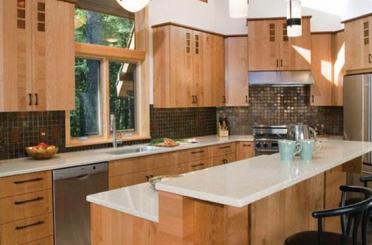
Joinery
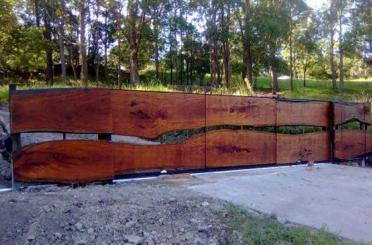
Fencing
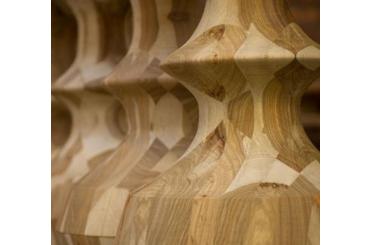
Mouldings
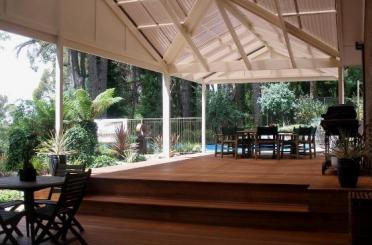
Pergolas
Framing

Flooring
Allied Forest Products

ARKit
Austral Plywoods Pty Ltd
Australian Timber
Baywood Products Pty Ltd

Branches Timbercraft

Briggs Veneers Pty Ltd

Fewings Joinery Pty Ltd

Garde Timber Pty Ltd
M1 Timber Works Pty Ltd

Mathews Timber Pty Ltd

Matilda Veneer

Ridgewood Timber Pty Ltd

Simmonds

The Window Man

Three(3)DM Pty Ltd

Timbeck Architectural

Timber Blitz Pty Ltd

Timbertruss Northside






